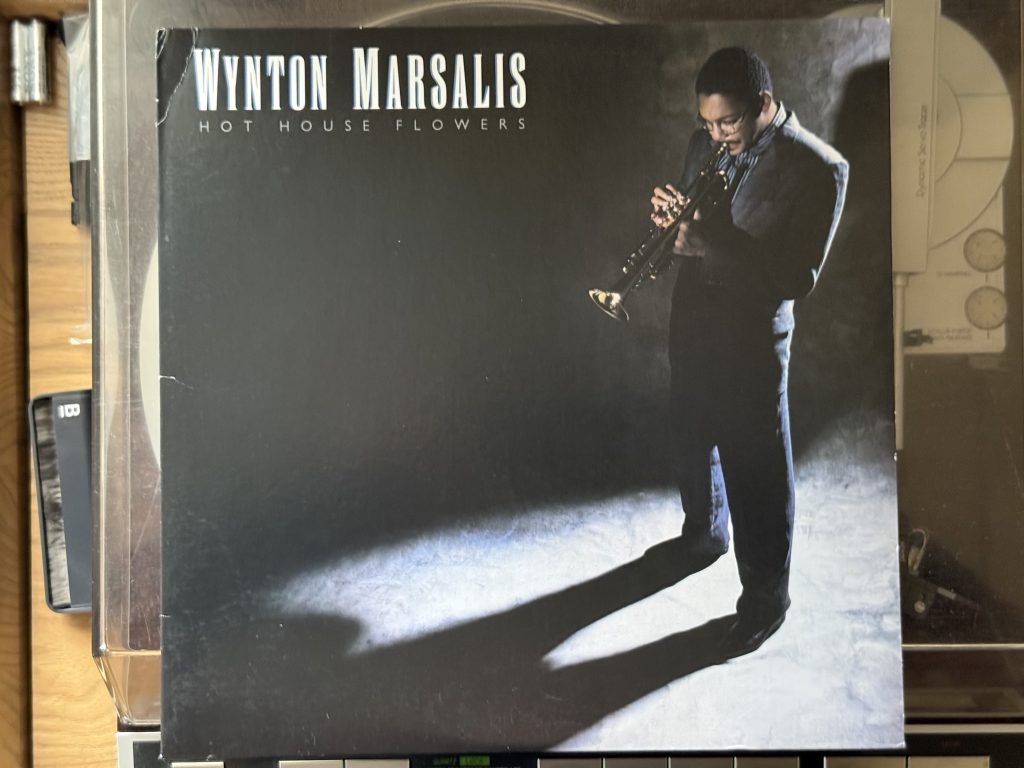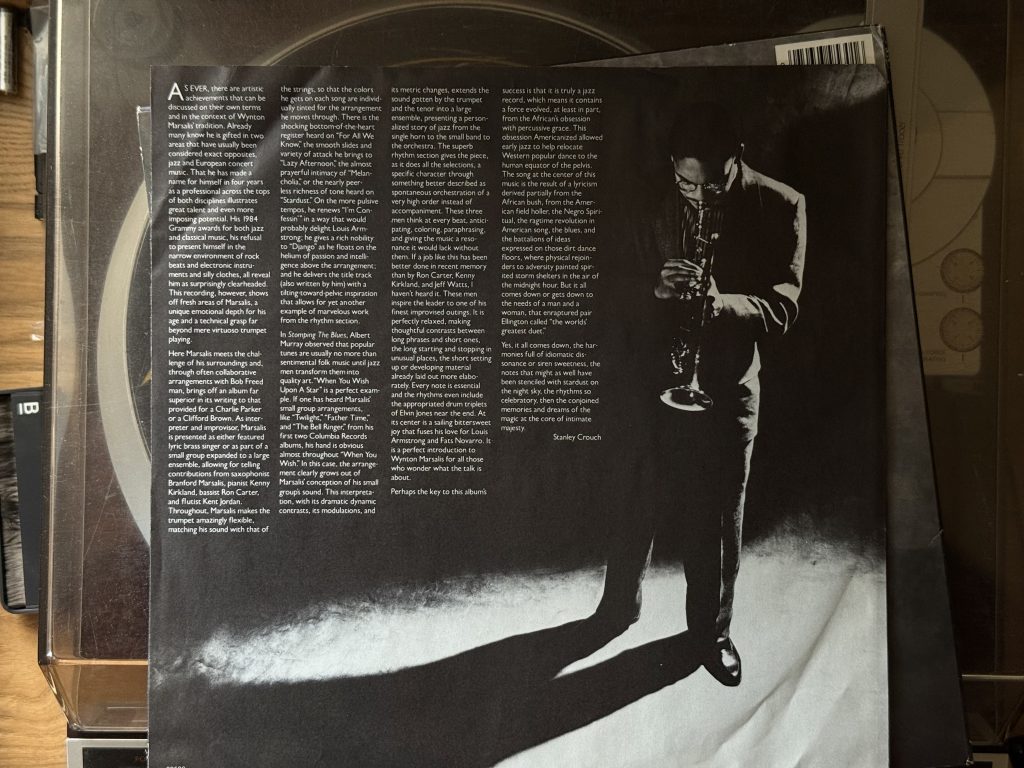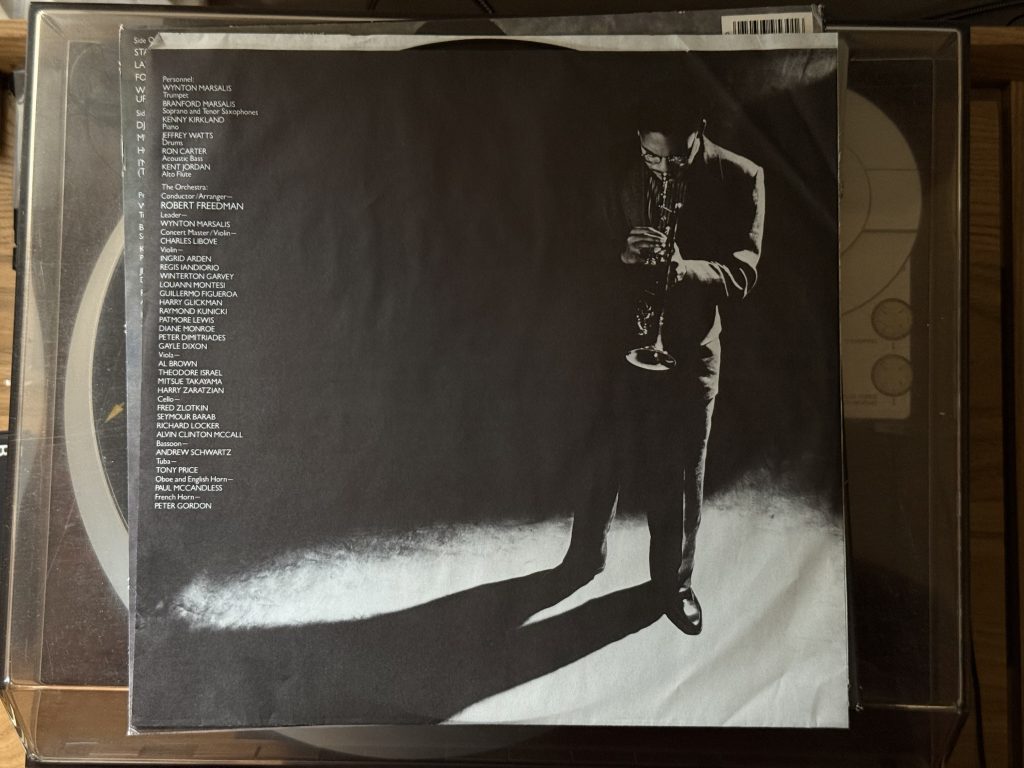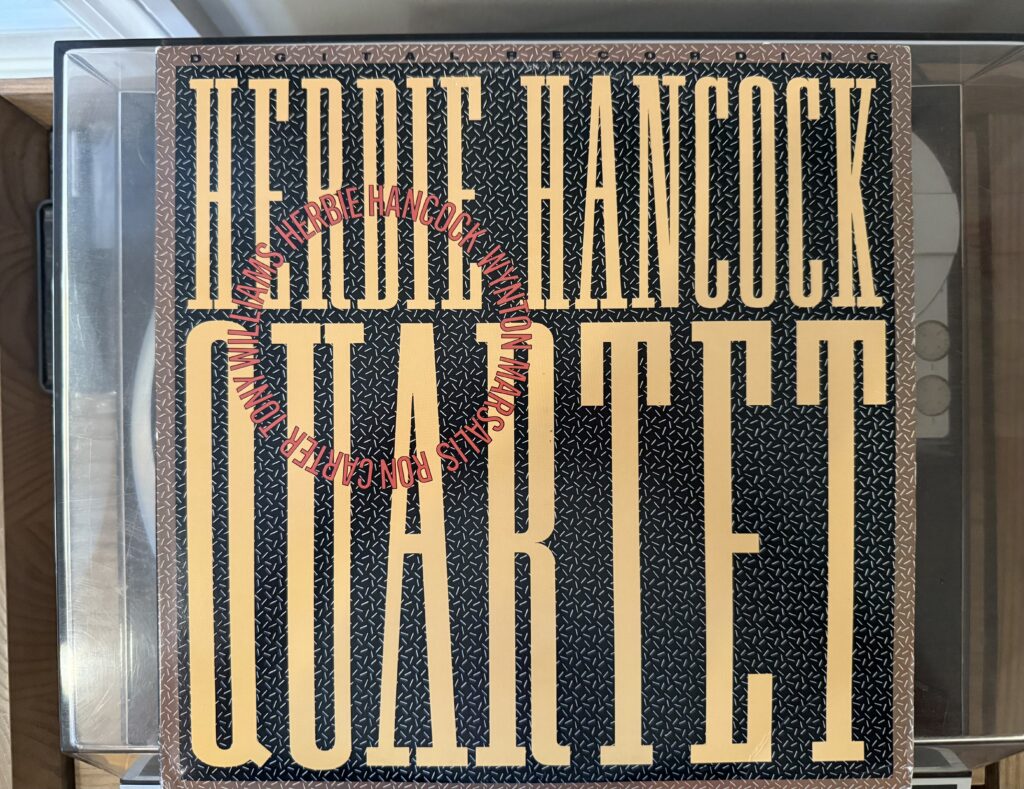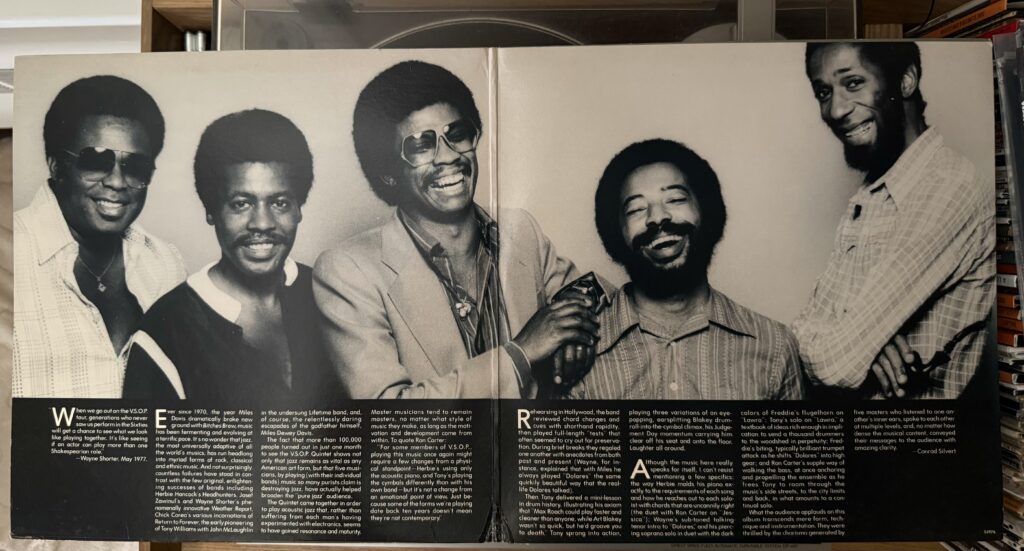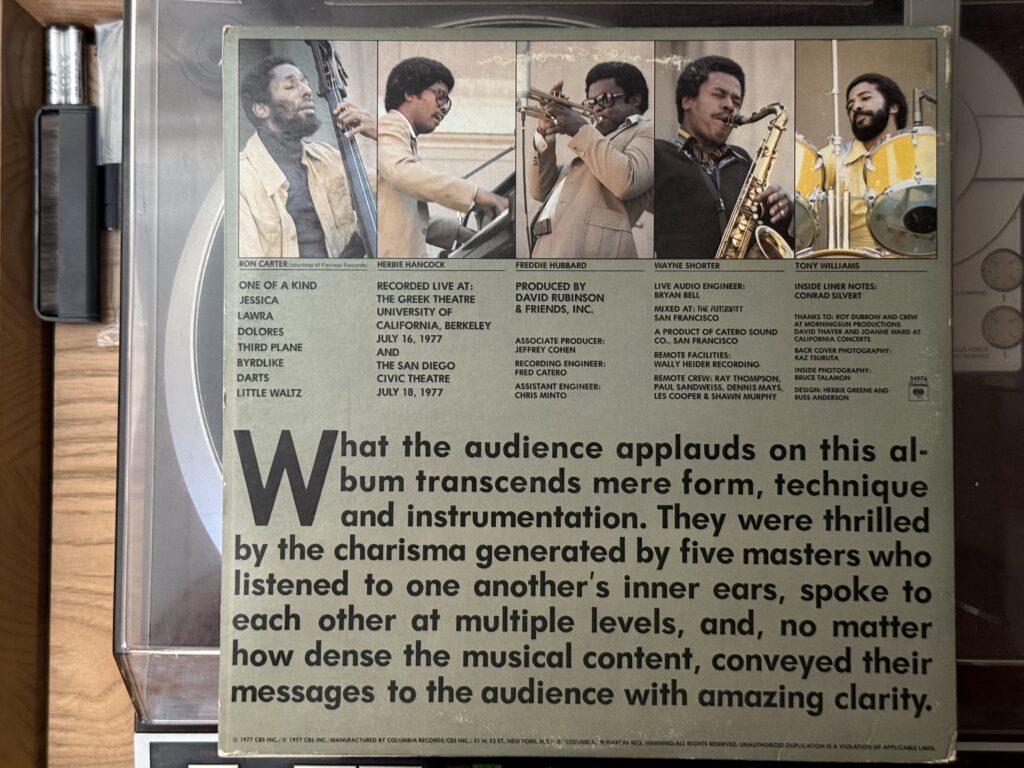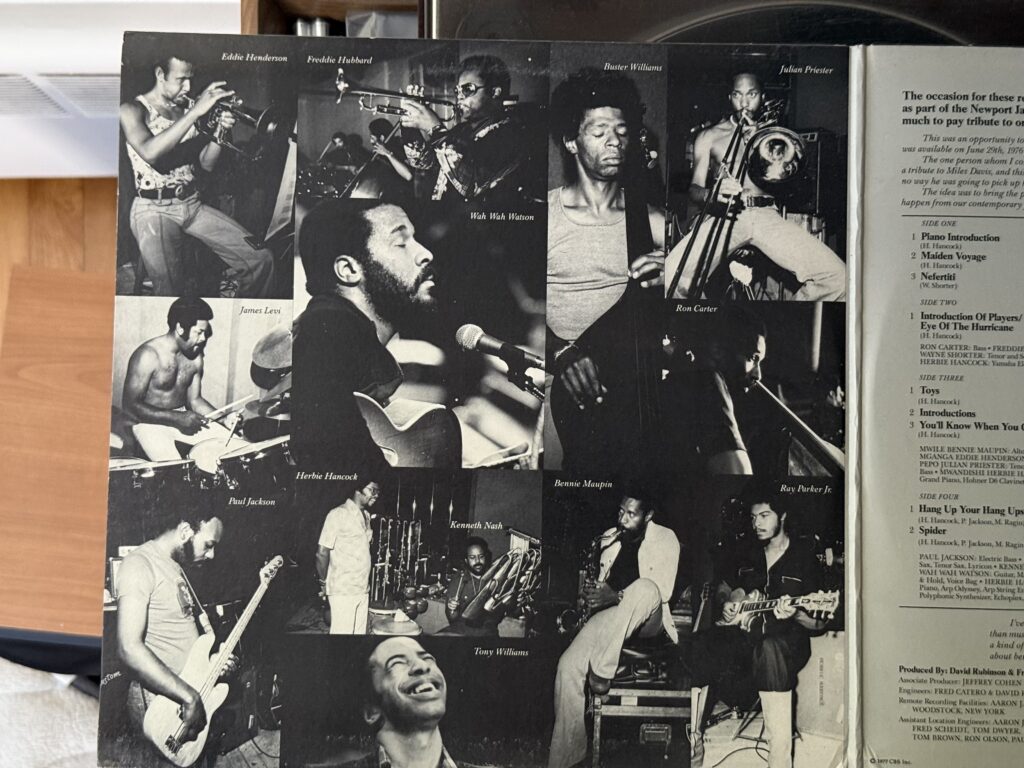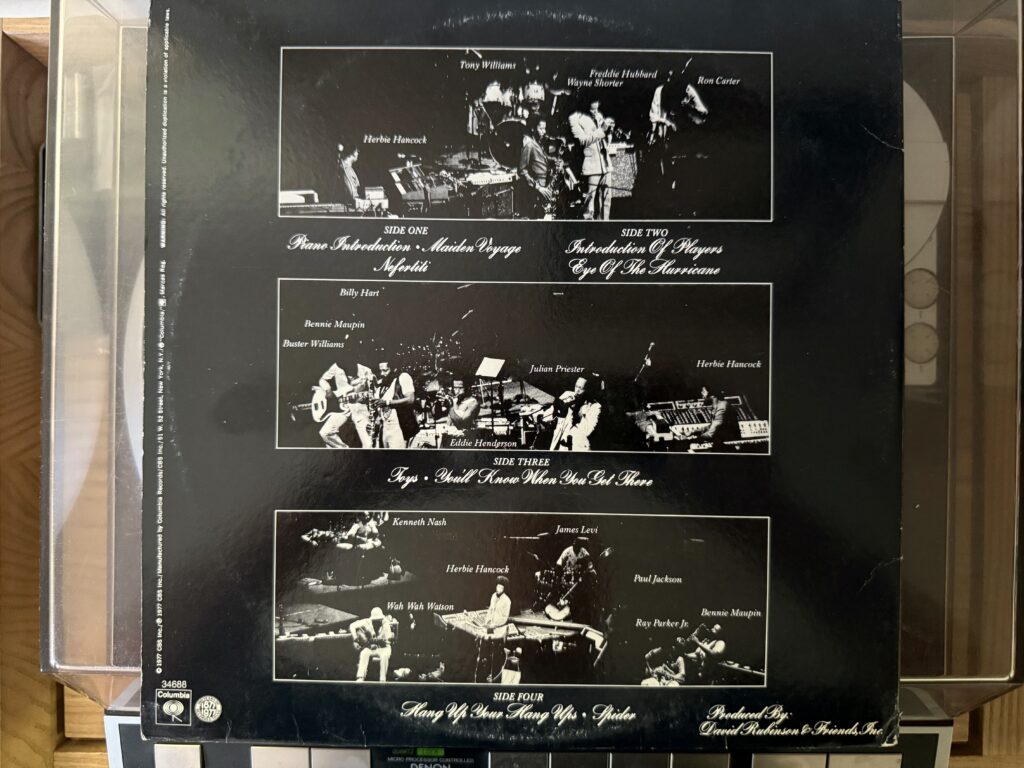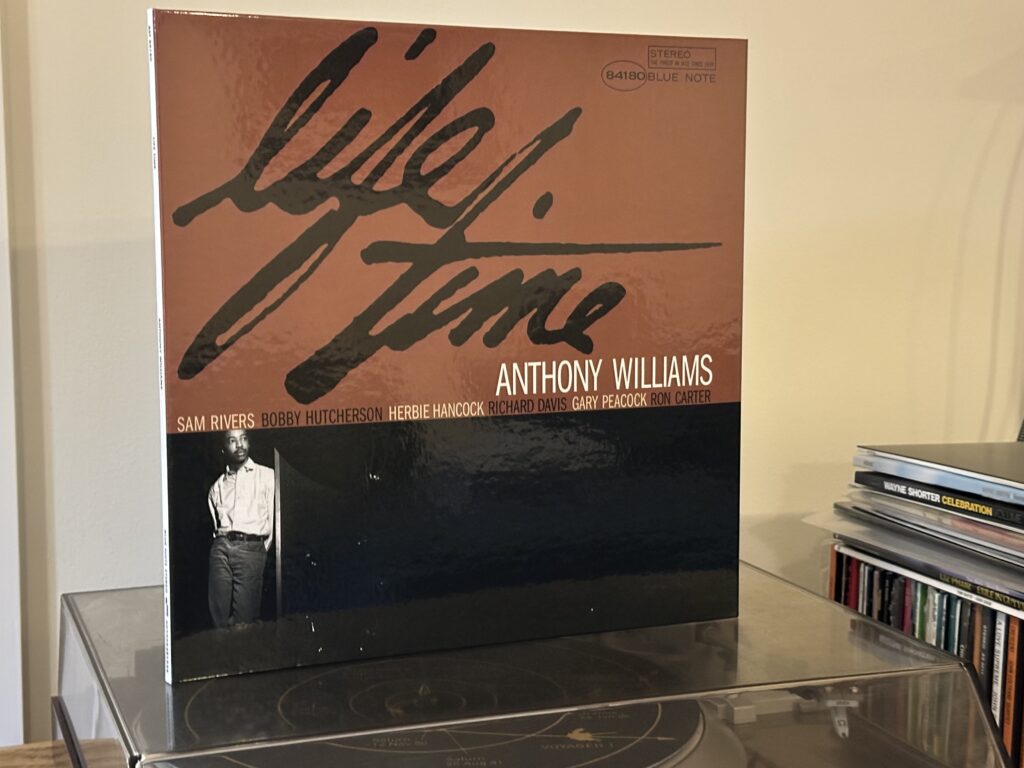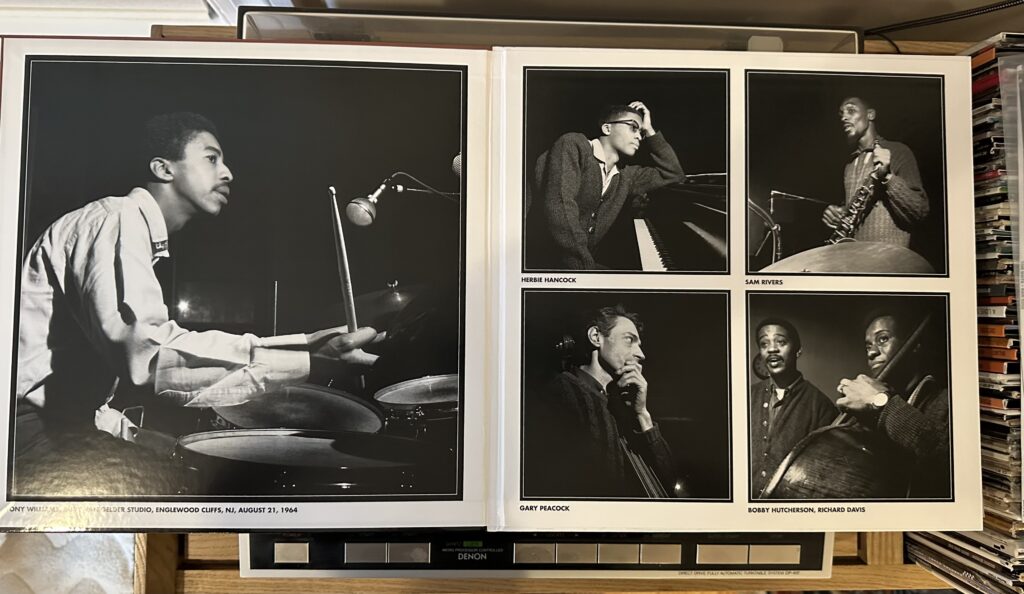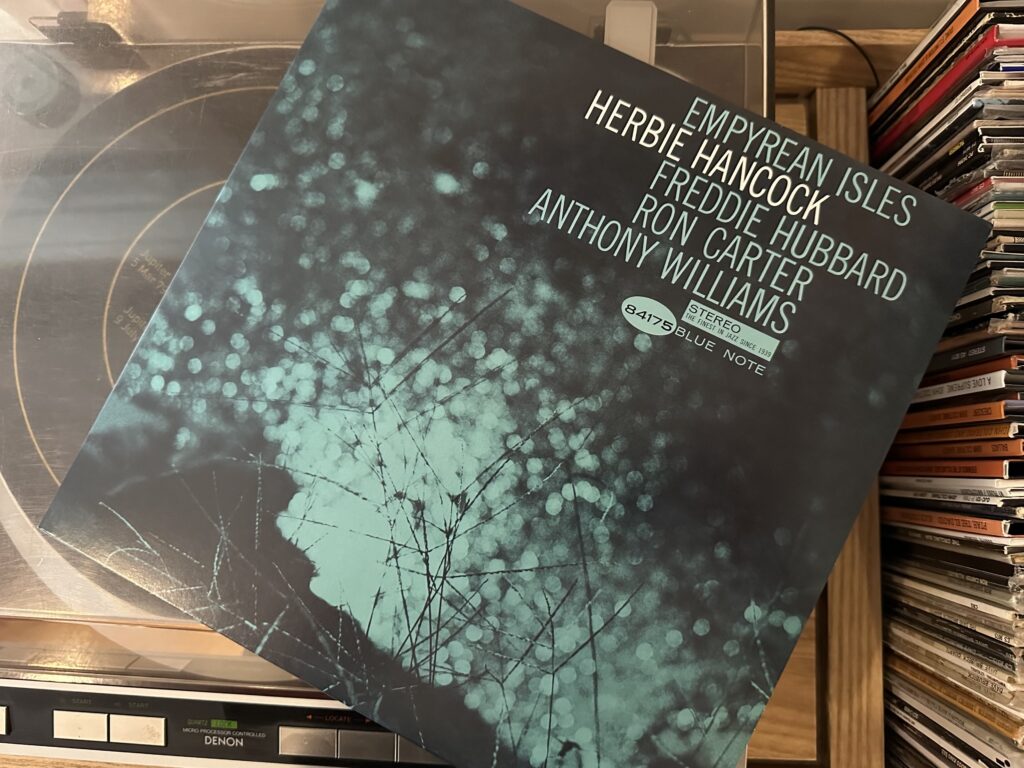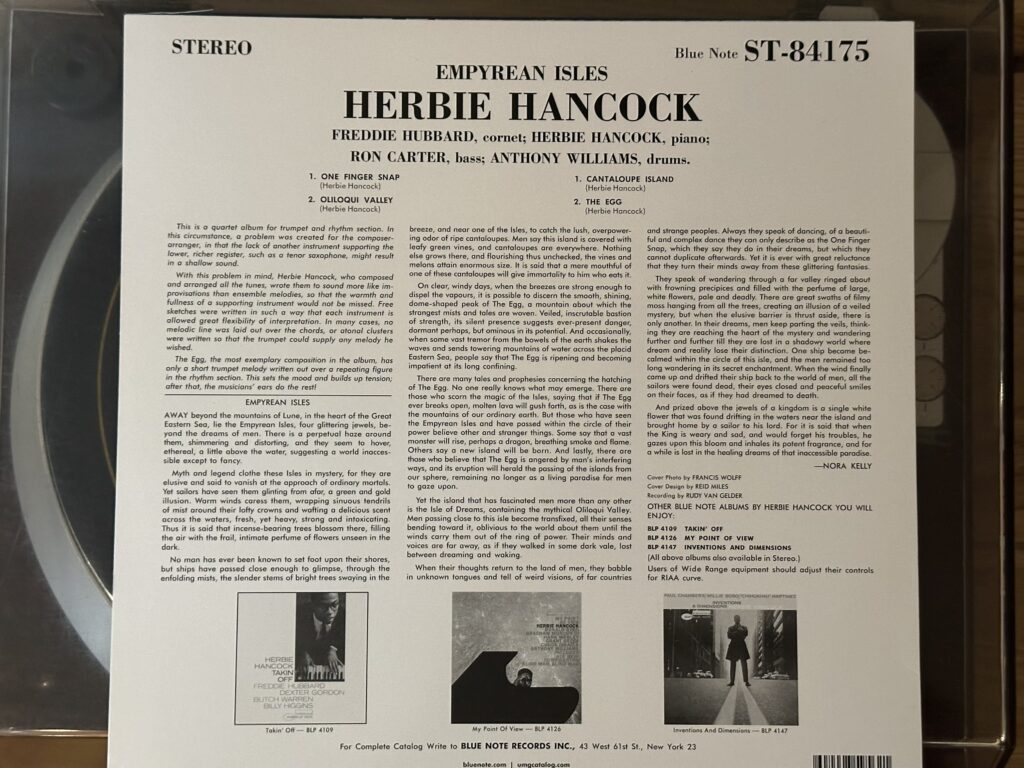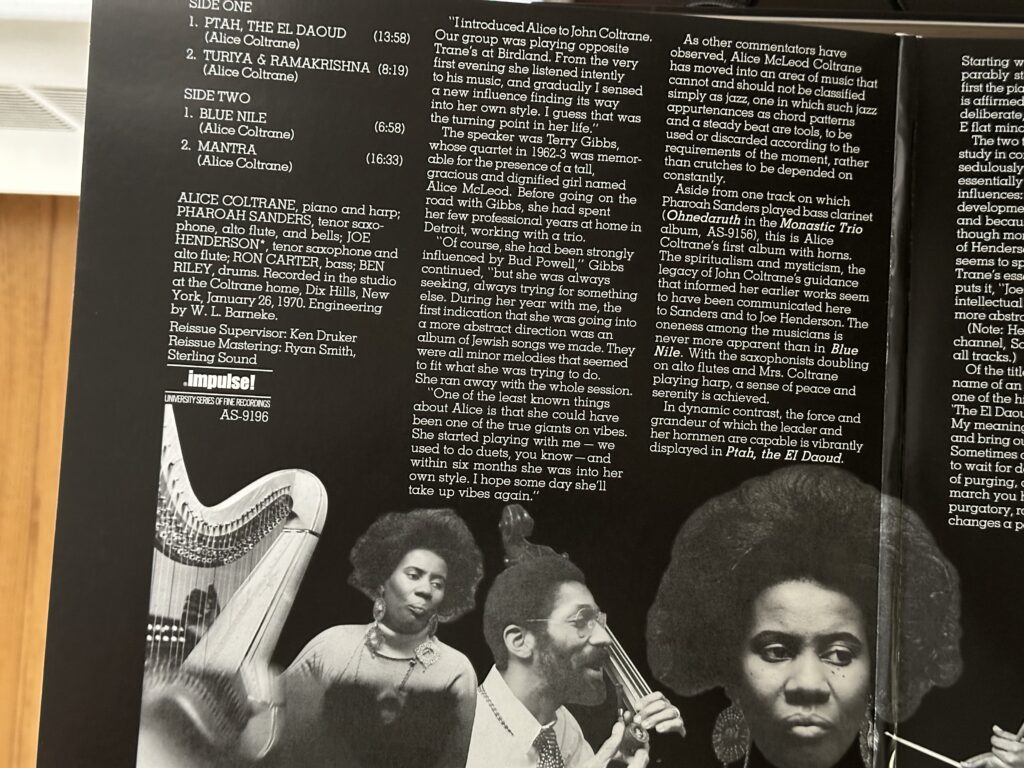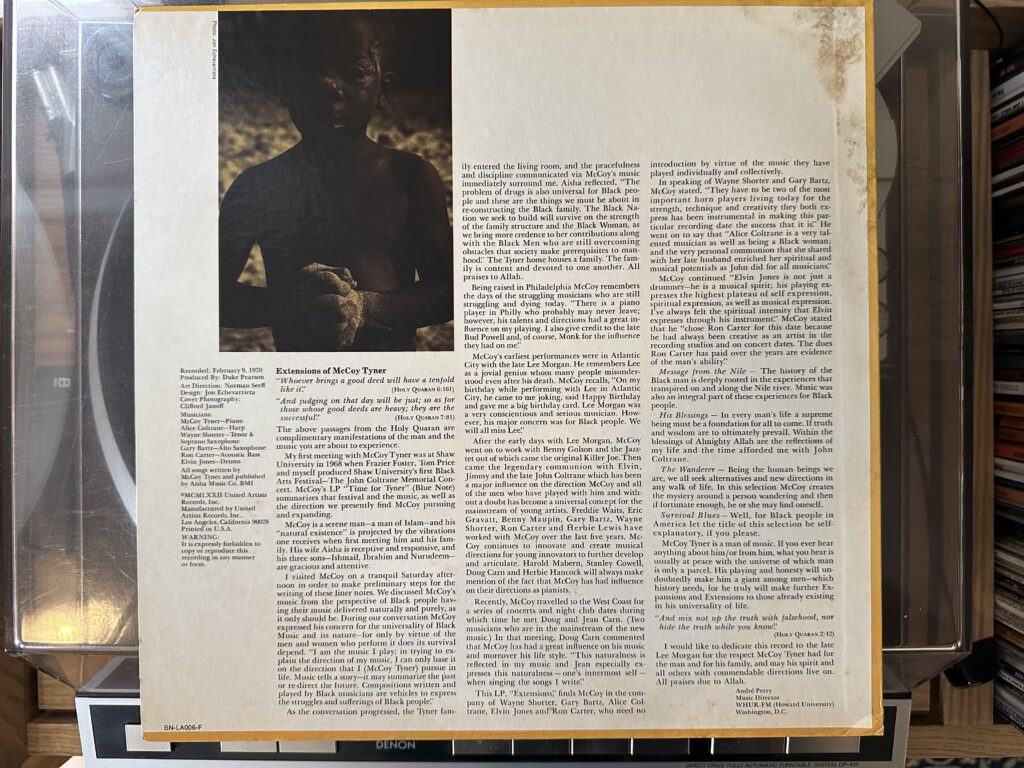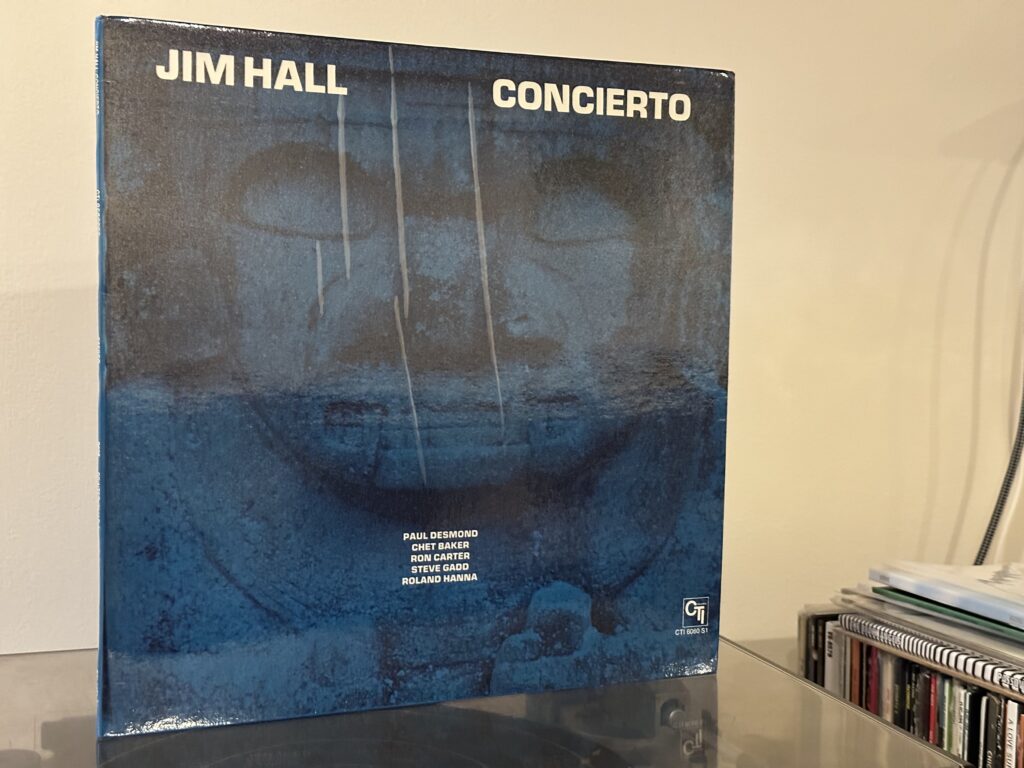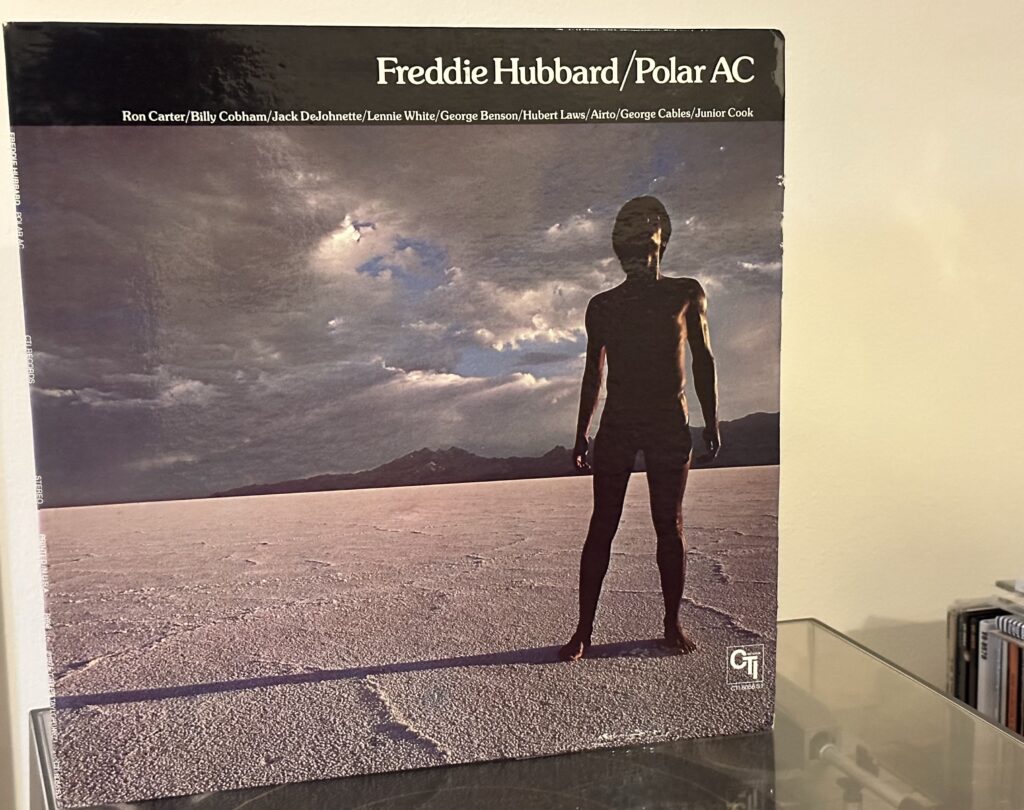
Album of the Week, September 13, 2025
When you’re Jimmy Smith, making two or three albums a year, sometimes you make masterpieces, and sometimes you make a party album that doesn’t have a huge impact on the musical world, but is fun to listen to anyway. Respect follows two huge releases from Jimmy and guitarist Wes Montgomery (we’ve written about some of the latter’s later work before). With a title like Respect the motivation for the album is pretty clear, recorded as it was not two months after Aretha Franklin’s hit, but it also has some excellent Jimmy originals. It might not quite reach the heights of Organ Grinder Swing or The Cat, but Jimmy Smith was incapable of phoning in a record date, as this hot session shows.
The album was recorded on June 2 and June 14, 1967 at Rudy Van Gelder’s studio in Englewood Cliffs, New Jersey. One session featured Smith’s long-time drummer, Grady Tate, alongside Eric Gale on guitar and the redoubtable Ron Carter on bass. The other had funky drummer Bernard Purdie with Thornel Schwartz on guitar and Bob Bushnell on bass. Regarding the two guitarists, we’ve reviewed some of the work Gale did alongside George Benson, Yusef Lateef and Freddie Hubbard on CTI. Schwartz made a career out of playing in jazz organ combos, working alongside Johnny “Hammond” Smith, Jimmy McGriff, and “Groove” Holmes, about all of whom more later. And Bob Bushnell had a widely varied career, playing on many Verve and Impulse releases, as well as dubbing the bass part on the “electric” hit version of Simon and Garfunkel’s “The Sound of Silence.”

“Mercy, Mercy, Mercy” is the song for which Joe Zawinul would have been known best, had he not gone on to work with Miles and to found Weather Report. The tune, which he wrote when he was in Cannonball Adderley’s band in 1966, was a hit, going to #2 on the Billboard Soul Chart and all the way to #11 on the Hot 100. Jimmy’s version grooves along in the same relaxed pocket as the original, coming off the simmer with the groove of Bernard Purdie’s funky drumming even before Jimmy starts his solo. Schwartz and Bushnell keep it in the soulful side of things as the band makes its relaxed way through the tune, accompanied by a fair amount of studio chatter from Jimmy.
“Respect” had burned up the charts just months before Smith went into the studio to record these sessions. The 1965 Otis Redding original had been gender-flipped in Aretha Franklin’s burning cover version, released on April 10, 1967, and had spent two weeks atop the Billboard Pop Singles Chart and 10 weeks on the Black Singles Chart. Schwartz and Purdie bring some of the insouciance of the Aretha version to the opening here, and Jimmy’s improvisation blends aspects of both Aretha’s blazing solo vocals and the backing vocals, so brilliantly sung by her sisters Emma and Carolyn that the liner notes for Smith’s album by A.B. Spellman incorrectly assume that Aretha had dubbed her own voice for the back-up part. “Respect” was clearly recorded for single release; it fades out after 2:12, just as Jimmy seems to be getting warmed up!
“Funky Broadway,” a Smith original, is backed by the Carter/Tate/Gale combo, and is an interesting evolution in Smith’s writing. Where many of the originals we’ve heard from him so far have been blues or loose jams, “Funky Broadway” is a tight groove with a slinky guitar line over Ron Carter’s reliable heartbeat, with Eric Gale and Smith taking turns playing syncopated diminished seventh chords under each others’ solos. The whole thing is a pretty magnificent exercise in James Brown-style funk. Smith calls out “Funky Broadway” at the end, I suspect naming the seven-minute-long jam for posterity.

“T-Bone Steak” is the second Jimmy original here, again with the Carter/Gale/Tate group, and we’re back in the twelve-bar blues. But it’s hard to complain about Jimmy returning to this particular well, since he jumps immediately into the deep end from the first notes of his solo. The double-speed runs followed by the hemiola, followed again by his leaning on the tonic for 36 bars or so as he rips improvisation after improvisation, might be some of the hottest, most concentrated brilliance he recorded. Grady Tate sounds a bit like Bernard Purdie here with the power of his hits on the tom, though not with his rhythmic approach.
“Get Out of My Life, Woman” closes the record, with Jimmy yelling, “Ow! Get out my life!” at the top as the band begins the Allen Touissant/Lee Dorsey standard. Here they play it as a tight New Orleans blues—a blues with more than a hint of shuffle underneath. The guitarist (I think this is Schwartz, Purdie and Bushnell, though without credits it’s hard to tell) unreels a steady, controlled funk throughout his solo, leaving Smith to take the lid off the pot as it hits the boil. The track finishes with Smith and the guitarist exchanging ideas right into the fade-out, as if reluctant to let the jam end.
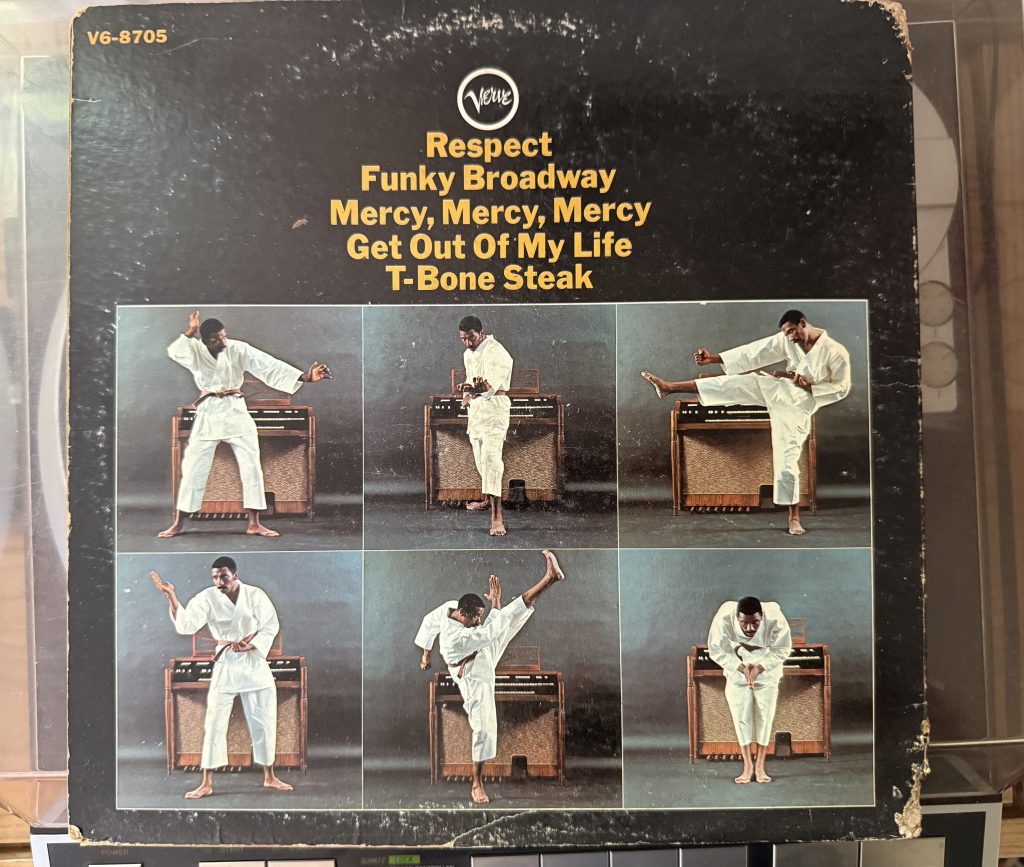
I haven’t talked about the album’s cover so far, mostly because it nonplussed me, but apparently Smith was, in fact, a karate aficionado. In an excerpt from Bill Milkowski’s Rockers, Jazzbos and Visionaries, Smith said he had been into karate for about 25 years and responded to Milkowski calling his gi a “kung fu outfit”: “Not kung fu, motherf–. That’s shotokan. And that means sho-kill-yo’-a–. I studied that particular method.” What is clear is that, even on a collection of mostly R&B covers designed to hit the charts, Jimmy’s playing remains as intense and vital as on the more significant albums in his discography. The commercial success of his work—the album hit Number 60 on the Billboard 200, spending 20 weeks on the chart—continued to attract others to the Hammond, and we’ll hear from another of those players next week.
You can listen to this week’s album here:
BONUS: Here’s a live rendition of “Mercy, Mercy, Mercy” in medley with “Country Preacher” by Cannonball Adderley’s band from 1970 , with Zawinul on the Fender Rhodes:





